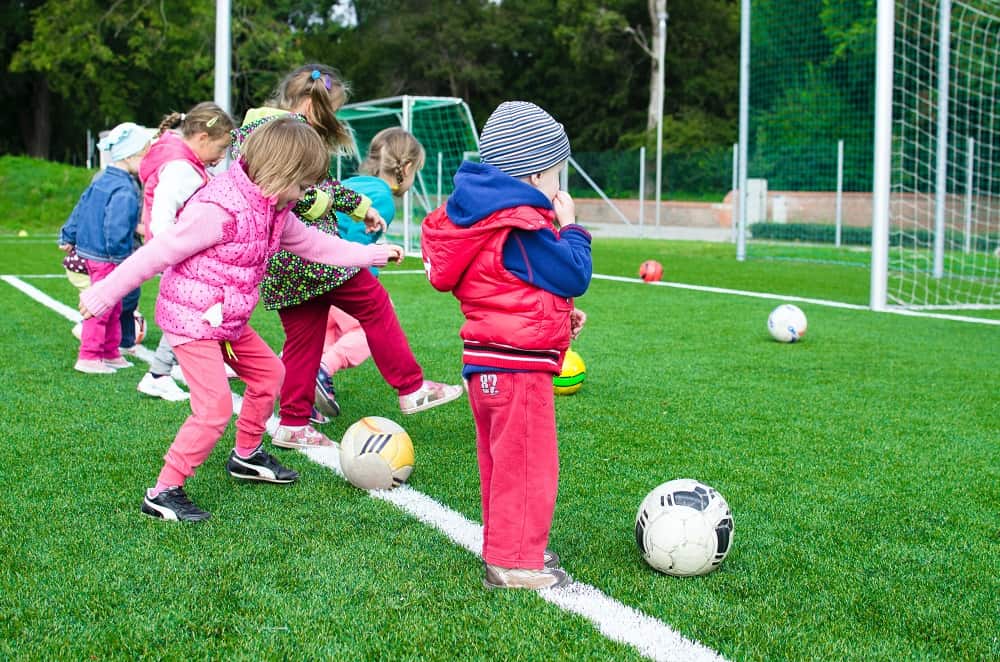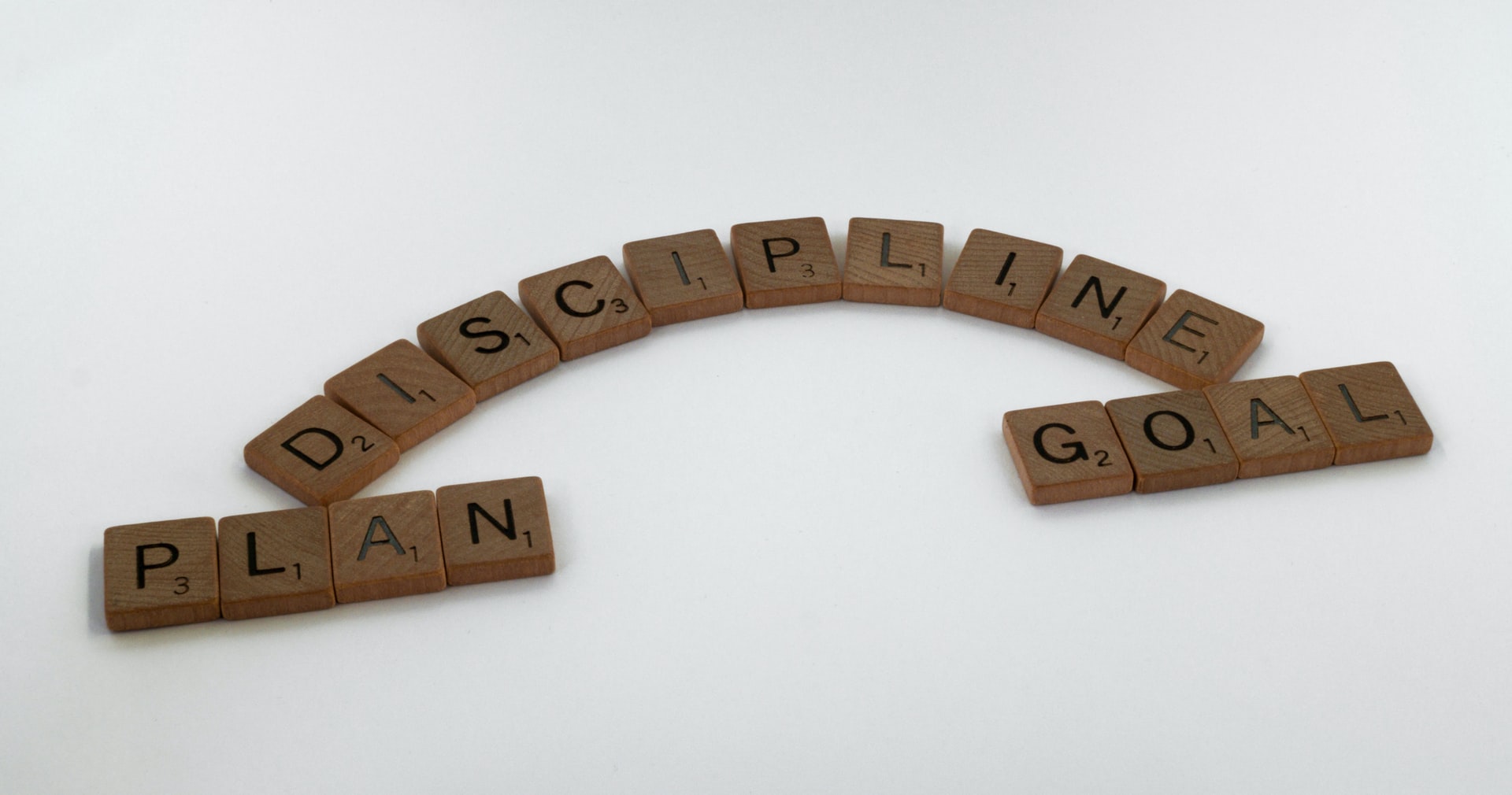|
|
|
| Altea |
Published on August 22, 2022

ADHD Natural Remedy? Do any work? If not, are there other methods that will help?
There is a wide variety of ADHD natural remedy(s) for ADD ADHD being promoted on the world wide web and elsewhere. Megavitamin therapy...which is the prescription of vitamins in quantities greatly in excess of the Recommended Daily Allowance guidelines has been suggested as a treatment for hyperactivity and learning disabilities.
L Tyrosine. This is an amino acid (a protein) that the body uses to synthesize dopamine and norepinephrine, the two neurotransmitters believed to be involved in ADD ADHD. These neurotransmitters are the targets of the medications used to treat attention deficit disorder. Some studies have shown that children with ADD ADHD may have lower levels of this amino acid. By increasing the intake of L Tyrosine through diet or supplements, it is possible to increase the amount of dopamine and norepinephrine available in the brain. It has been seen in clinical practice that some ADD ADHD sufferers, including both children and teens have benefited from taking one or two Tyrosine tablets per day in conjunction with psychological interventions.
There are...however some over-the-counter supplements that have been shown to improve the ADD ADHD symptoms. The alternative community’s thought is that there are four major alternatives to stimulant drug therapy:
Natural drugs and homeopathy, counseling, assistive technology school support services, and EEG biofeedback. How effective are they?
Alternatives to stimulant medications, like an ADHD natural remedy, cover a wide range of approaches. Support for their effectiveness is determined by their method.
Self-confidence is one's capabilities is the central goal of the therapy and counseling method. If you would like to try this form of treatment, book an appointment for individual or family therapy with a free consultation at Estadt Psychological Services.
More psychological than physical, therapy guides and reassures ADD ADHD patients on their abilities and provides daily behavior and attention management.
Therapy covers a wide range of treatments from psychological and behavioral treatments to routine community care, all helping people cope with their disability.
People are treated on an individual basis. The personal and intimate style of therapy helps patients become comfortable with their disability and personal management on their own.
Similar to therapy, assistive technology focuses on specific and individual abilities.
The method works to improve student's self-esteem in the classroom. By working on problem-solving skills for youth and adolescents, assistive technology is directed towards the classroom.
Direct teacher strategic assistance provides students with a clear orientation. The method bases itself on teaching strategies for the classroom and individual products to help the student overcome minor difficulties.
Products like handheld spell-check to improve spelling, reinforce the student's self-esteem. This method has been shown to work best for college students. Though specific strategies such as direct instruction and control of task difficulty have shown to work in younger people.
A non-stimulant, alternative biological method, EEG biofeedback, guides the brain in the management of the central nervous system. Brainwaves are measured and controlled through an EEG, electroencephalogram, which regulates the body and psychological functions for ADD ADHD. The patient is connected to conductor pads, which read the brainwaves, while simultaneously observing the waves that appear as colored bars on a graph.
Control of the brainwaves is the goal of the exercise, moving the colored bars move either up or down, producing slow and fast brainwaves. Response to "Brainwave training" has been mixed; studies show that improvement is shown, though the amount of improvement can be minimal. The home setting can affect the results, along with the age and degree of disability of the patient.
All that being said...there is some over-the-counter ADHD natural remedy(s) that will help the person with ADD ADHD.
Published on August 22, 2022

ADD ADHD children need to “run it off” after school.
They are often full of nervous energy after a “day of torture” of sitting in a schoolroom. When this child comes home from school, let him or her go outside and play. After-school snacks should include some protein like cheese or meat.
Not! high sugar items like soda, cookies, and cakes or carbohydrates like potato chips and french fries.
Sometimes your child will do best if they eat their big meal of the day after school... rather than in the evening. Some of these children become so stimulated at school, they either don't eat lunch or rush through the meal so they can go outside and play.
If your child is in an after-school program at a daycare center, YMCA, or at school. The program should include an outdoor play that involves the “big muscle groups”: running, jumping, and so forth.
If it is an indoor program, there should ideally be a gymnasium where the child can play sports that involve running and intense exercises like basketball and soccer.
Baseball, volleyball, and other sports that include a lot of standing around will not benefit ADD ADHD children as much as intense exercise.
The after school program should provide a snack that includes proteins and not cookies and cakes or carbohydrates like potato chips or crackers.
Don’t let your child zone out after school and in the evenings in front of video games and television. “Screen time” makes ADHD worse. Limit it to a half-hour a day.
Activities For Children With ADHD
Activities for children with ADHD...
For a family with ADD ADHD children, vacation time can add even more stress.
The children have nothing to do, and they are climbing the walls.
You may want to consider an overnight summer camp designed especially for ADD ADHD children.
Most of them are in wilderness areas, which is a benefit in itself because of the activities for children with ADD ADHD they provide.
These camps are usually very structured, which will also help control ADD ADHD symptoms.
Activities for children with ADHD...
If you are at home full-time with ADD ADHD children, structure their day around outdoor exercise.
Bike riding, swimming, hiking, and outdoor sports are all good summer activities.
Limit television and video games to a half-hour per day. It may be better to limit the number of friends your ADD ADHD child has over to play to one or two at a time.
If you take your ADD ADHD child to a museum. Choose one that has “hands-on” exhibits and things they can touch, rather than things to look at.
Plan to stay only a few hours at most. They may not last on a museum tour where a guide talks a lot.
ADD ADHD children usually do not do well at grocery stores, malls, and other shopping centers. They can get over-stimulated by all the noise, people, and “stuff”.
Don't try to take them to restaurants where the service is slow and there's nothing for children to do but sit.
Don't let ADD ADHD teenagers play video games and watch television all night long and then sleep all day.
Summer school classes are usually too long for an ADD ADHD child.
That typical summer lifestyle will make their symptoms worse. Have your teenager get a paying job or go to summer camp instead. Activities for children with ADHD...
For example, summer school algebra is usually six weeks of algebra for four to six hours a day which probably won't work too well for your ADD ADHD child.
The University of Illinois Human-Environment Research Laboratory is doing a lot of research on the effect of “green space” on human behavior.
One of their findings is that if you spend time in nature, your ADD ADHD symptoms will improve.
In activities for children with ADHD...the findings are very specific:
Try to spend as much time as possible outside in natural settings.
The best way is to break up your day with time spent outdoors.
You and your ADD ADHD child can have your lunch in a park. Take a jog along a lake in the evening.
Activities for children with ADHD...take your weekends and vacation days in a wilderness area rather than in a city or an amusement park.
Activities for children with ADHD...
Aerobic exercise means working your body so hard that your heart rate increases and you need to breathe more deeply.
Examples of good aerobic exercise are running, tennis, bicycling, and swimming.
Weight lifting, bowling, walking, and other forms of exercise that do not work the body as hard as aerobic exercise will only help somewhat.
They are not as good at keeping ADD ADHD in check as aerobic exercise.
ADD ADHD people should do between 30 and 40 minutes every other day. Keep it on a regular structure.
If your ADD ADHD child does not have physical education classes at school and does not go outdoors after school to play, you may want to enroll him or her into an aerobic exercise program like karate or swimming three times a week.
Some attention deficit disorder children do not have the concentration to participate in formal sports programs like Little League and basketball. However, that does not mean they should get out of exercising.
ADD ADHD kids benefit from exercise even more than the average child does because it reduces their stress levels and helps keep their hyperactivity under control.
Don't expect instant results from exercise.
Dr. Michael S. Wendt at the State University of New York at Buffalo studied the effect of exercise on the behavior of ADD ADHD children aged 5 to 12.
The children did aerobic exercise five days a week for forty minutes and their respiration was monitored.
Activities for children with ADHD...between the second and fourth weeks of the exercise study, most children improved their behavior, as reported by parents and teachers.
These are just some ideas for activities that will be beneficial to your child with ADHD. If you’re interested in seeking further treatment for them such as psychotherapy or family counseling to strengthen your bond and understanding, visit Estadt Psychological Services.

Throughout your development as a leader, you have either created change, or proactively adapted to change happening around you. In today's fast-paced business world, it's important to recognize you don't have to go it alone. More executives are turning to coaches for help. Working with a range of clients, from the highest-ranking corporate leaders to owners of small and medium-sized companies, they bring stability and focus to an ever-changing work environment. Here are some pointers that will help you understand the coach/client relationship. First of all, let's look at the definition of an Executive Coach. An executive coach plays four roles. First, a coach is a professional development expert in a specific discipline, such as leadership development, performance management or emotional intelligence, who provides guidance and insight. Second, a coach is a partner who challenges your thinking as a leader. Third, a coach is a confidant and trusted advisor, and fourth, a coach is an objective outside resource.
A coach will guide you through the thinking process to help you understand what changes must be made to succeed in your leadership role. This process helps you outline steps toward positive change. Their role may be part investigative reporter and part sounding board to help you make the right business decisions. The training is in place to ask thought-provoking questions and provide valuable feedback to your plan. Because there is no company allegiance, progress can be achieved more quickly.
Why do executives need coaches today when they were virtually unheard of in past years? Let's face it; the work environment is more complex. The pressure put on executives today is often double or triple of that of their predecessors. Executives are expected to manage more with fewer resources, and are juggling mergers, acquisitions, buyouts, downsizing or directing a change in company philosophy. Executives cannot rely solely on their upper-level staff advisors or team members to provide input, because they have their own crises to handle. The executive coach fills this role to help guide the process. They ask questions of a purely objective nature and keep the discussion focused. Coaching can result in a leader's enhanced self-awareness, a recognized need for continuous improvement, clearer goals, and ultimately better decisions.
What should you to look for in an executive coach? An executive coach is no different from any other professional advisor you would hire to assist in planning. We scrutinize the choices of legal advisor, accountant or stockbroker. Why should a coach be any different? First, and the most important, look for a good fit. Keep in mind that your coach is there to motivate you and guide your thought process. It is important to have someone who communicates clearly, is a good listener, is genuinely interested in helping you meet or exceed your goals, and is well organized. Like any other professional whose services you engage, coaches must be screened as well. If there isn't a fit, keep searching until you find someone who is the right fit.
Like any relationship, the coaching relationship must be built on trust and mutual respect. You must trust this part of your trusted advisors to guide you through a strategic thinking process. The more information you share, the more beneficial the experience will be to you. When you have identified your need, you and your coach determine the frequency of the coaching sessions. Many initial executive coaching sessions last from 2 to 4 hours, with follow-up sessions varying from 1 to 2 hours. You can set the pace once your plan and strategies crystallize. Follow-up work can be done weekly, bi-weekly or monthly, depending on the timeframe for desired results. Some follow-up coaching can be done by telephone, which provides a different dynamic for communication. Together, you and your coach determine the length of the ongoing coaching relationship. This key relationship can last a few months or several years.
You might be asking yourself "Is executive coaching a trend?" The answer is "no." It is clear through results that the coaching profession will continue to provide a valuable service to leaders. A quick poll of colleagues in executive search, placement and outplacement indicates that executive coaching is a high growth industry with no signs of easing up in the next few years. As executives' lives continue to gain speed, and they are expected to manage more, do more, learn more, and handle more at a rapidly increasing rate, they will need the assistance of expert coaches to help them make better business decisions, polish their skills and balance their lives.
There are many resources to locate an executive coach if you determine this can make a significant difference in your role as a leader. First of all, your own company may work with an executive recruitment or outplacement firm, - this is the first place you can turn to for assistance. Many such firms offer executive coaching, or work on a referral basis with independent executive coaches. There are several excellent national resources for locating an executive coach who is right for you. The following provides links that will quickly get you to a list of coaches by geographic location and type of coaching offered. And, remember every professional athlete has a coach and they aspire to such greats as major contracts or the Olympics. Why should your journey as a leader be any different?
If you are looking for a team lead coaching? Visit us at Schaller International LLC.

In today’s fast-paced world of technology, stress, and ever-changing business, people are in such a hurry to get somewhere that they forget what they are leaving behind. If you stop and think about it, every word, every action, and everything we do throughout the day leaves an impression on the people around us. Whether it’s our co-workers, family, or friends that we interact with, our commitment to personal discipline is the foundation of our perceived character.
Although we might not realize it, each day we leave an indelible impression of our personal self-worth, beliefs, work ethic, and character with every person we come in contact with. Over a period of days, weeks, and years these little impressions begin to build a picture or "advertisement" of our character for others to see. It is human nature to make mistakes, but it is also human nature to overlook the legacy of daily impressions we leave behind.
Generational discipline is the legacy that each of us leaves behind for our friends, spouses, and children to remember us by. It is also the legacy of our work ethic that our co-workers, employers, and customers remember us by. Every day that we show up to work, interact, and perform a task, we are building our own "advertisement" for others to see. Small things that we do might not seem like a big deal at the time, but over the course of our careers they amount to nothing less than our character image. Words like teamplayer, selflessness, commitment, and integrity are used to describe a person that focuses on his or her daily performance.
Around 40 years ago, Yale University conducted an extensive seven-year study on how a person's actions in life affects the lives of his or her children. This study was focused around the lives of two men: Max Jukes and Jonathan Edwards. Max Jukes was an Atheist that believed in the abolition of laws and rules. Mr. Jukes formed an organization called the Freedom Movement that preached free sex, no laws, no formal education and no responsibilities. Jonathan Edwards was known by all as the "disciplinarian". Not because he disciplined his children harshly, but because he was a self-disciplined man. He became a preacher that believed in leading by example. He authored two books on the subjects of physical fitness and kindness. Edwards later became involved in teaching people to be responsible for their daily actions. Both of these men were chosen for their diverse beliefs, but also because they both fathered 13 children.
Throughout my travels as a professional speaker, I am constantly asked the question of "what effect does self-discipline have on my life?" Sure, becoming disciplined will change your life for the better, but real results are seen in the legacy we leave behind. When we begin to use self-discipline to control our emotional highs and lows, our appearance, our work ethic, and our commitment to physical exercise, we are doing much more than improving our own lives. Our ability to begin focusing on our daily performance is directly proportional to the success our generations will experience. Today is not about you, your job, your bank account, or even your own personal satisfaction. Today is about the legacy you leave behind.
Take the time to slow down and examine every aspect of your actions, words, and thoughts throughout the day. Make it a priority to exhibit the trait of self-discipline. Begin focusing on the "advertisement" that you are showing your co-workers, friends, and family. The ability to control your life through the power of self-discipline, is not only the secret to a lifetime of success, but the determining factor of the legacy you leave behind. The legacy of self-discipline.
You'll find the answer you're looking for at Schaller International LLC which helps the team leaders and teams to increase their performance, engage, and excel towards team purpose.

According to the World Health Organization, major depression is the leading cause of disability worldwide among people aged 5 years and older. It is also the most common and widespread of all psychiatric disorders. Depression can range from mild to severe and takes a significant toll on individuals, families, and society. It also negatively affects the economy through diminished productivity and use of healthcare resources.
The signs of a major depressive episode include the minimum of a two-week period with 5 or more of the following symptoms present most of the day, nearly every day. Depressed mood or loss of interest or pleasure must be present.
A recent research project which questioned 500 practicing psychologists identified these eight critical risk factors for suicide in patients with major depression:
Note: Dysthymia (which is defined as a sub-threshold depression accompanied by gloominess, lack of pleasure, low drive and energy, low self-esteem and a pessimistic outlook), bereavement, or stress can cause depressive symptoms to a lesser degree.
Major Depression, Bipolar illness and Dysthymia are all considered biological illnesses. They are caused by certain problems in brain chemistry. Often the brain does not have enough serotonin. We understand clearly now, however, that depression and dysthymia are not purely biological in origin and, in fact, can actually be a tool for survival.
Most antidepressants and St. John's Wort works by increasing the availability of serotonin in the brain. However, medication alone is seldom the solution. Learning new ways of thinking and responding to life is also an important part of treating depression.
Grief from a loss or some kind of major trauma or tragedy can make someone very sad. The loss of a loved one, job, home, health, mobility, and independence can all be causes of grief. If a person is biologically prone to depression, this grief can increase the chances of developing or exacerbating the illness. If you are experiencing severe grief which has lasted for more than a couple of months, you may have moved into depression. You will improve with treatment.
Those who have experienced severe loss, trauma, neglect and abuse in childhood, or violence at any age, can also develop depression. We now understand that events such as these can actually change brain chemistry. This is why medication can be helpful. Therapy can change brain chemistry, too and the combination of therapy and medication can be more effective than either by itself.
Pi-polar disorder is a condition in which depression and mania alternate.
Sunlight affects levels of serotonin in the brain. In the winter when we spend more time indoors and there is less available sunlight, serotonin is affected in some people. These people become depressed only in the winter.
Research has proven that for many people depression is best treated with a combination of therapy and antidepressant medication. However, if there is a reason that you are hesitant to take antidepressant medication, you can be helped by therapy alone. There are many different kinds of therapy available.
What is negative self-talk?
Negative self-talk plays a big part in depression. Some examples of this are:
In reality the world has both good and bad events and actions. Negative thinkers see only the negative. They are in so much pain that they can no longer see beyond it to the positive things in the world and in their lives. They need to retrain their brains to see both the positive and the negative.
Polarized, or black and white thinking sees only good or bad, right or wrong, and nothing in between. Black and white thinkers usually believe that there is only one "right" way of doing things. An important part of therapy is learning to see the gray, learning to tolerate life's ambiguities, and learning to trust yourself and the choices you make.
Numbers 8 and 9 are examples of shame. Shame-based people have a very difficult struggle to redefine themselves, but it is possible to do with good therapeutic help
Panic is the body's automatic response to fear or a threatening situation. It comes from the sympathetic nervous system. We sense danger and our bodies prepare for fight or flight. Panic is often be connected to a trauma that has occurred earlier in a person's life.
With anxiety, we experience feelings of nervousness or worry. Most people experience some anxiety at some time. It is a signal that tells us we are in new life-territory and unsure, or that keeps us alert and on our toes as we perform a risky or dangerous task. However, if a person has a high level of anxiety most of the time for no apparent reason, it becomes a problem.
Often, people who experience frequent panic attacks also begin to experience a great deal of anxiety, too. In fact, the anxiety is often about whether or not the panic will occur.
As with depression, a combination of therapy and medication can be effective in the treatment of anxiety. A natural treatment for panic and anxiety is Thought Field Therapy™, which works on the energy meridians that are used in acupuncture and acupressure. For mild anxiety or sleeplessness, some natural treatments are Valerian Root, Kava-Kava, Chamomile, and passion flower. These have been used for centuries in some cultures.
I believe that all of life is a journey of the spirit and that everything that happens - including the randomness of grave illness, trauma, violence, and loss - is part of our spiritual path. It is often a crisis - past or present - which provides us with the stimulus to find the help we need to reclaim the wholeness with which we came into the world.
Check Schaller International LLC for more information.

No one really knows for sure what causes ADHD, although it is certain that there is a strong genetic link.
Research has been conducted for many years and there is a distinct relationship between ADHD and the brain structure, dopamine and norepinephrine, and parts of the brain that control impulse and attention. Some researchers believe that ADHD is related to mothers who smoked, drank alcohol, or abused drugs while they were pregnant. There also may be a relationship between ADHD and lead exposure.
For years, it was thought that there was a relationship between diet and ADHD, believing that too much sugar in one's diet would result in ADHD. That link was dismissed as untrue. The mystery is determining the exact cause of ADHD is that each case is different which leads doctors and researchers to believe that there could be multiple factors causing this disorder. There has been a lot of research on brain activity and ADHD and research have shown that people with ADHD do have less activity and blood flow to certain parts of the brain than someone without ADHD.
The parts of the brain that are responsible for behavior, attention, and controlling mood are the prefrontal cortex, the basal ganglia, and the cerebellum and these are the parts of the brain that are mainly affected. Other evidence indicates that neurotransmitters play a large role in ADHD, especially dopamine. When certain neurotransmitters are off whack the brain functions inefficiently this causes many problems that are also related to ADHD. The problems that stem from this are the same problems that are caused by ADHD, inattention, hyperactivity, impulsiveness, and so on.
There has been some research also conducted that indicates there may be some other risk factors that cause ADHD such as watching too much TV, growing up in an unloving and insecure environment, and a poor diet. If you would like to get your child evaluated, click here.
It is possible, according to some researchers, that watching too much TV can cause the brain to need constant stimulation as watching TV stimulates the brain. It is also possible that if a child is raised in a home where there is no parent/child bonding and there is a lack of emotional attachment, there may be a link to ADHD. A poor diet that lacks in nutrition, food allergies, infant malnutrition, insufficient omega-3 fatty acids, and other links to diet might also contribute to ADHD.
None of these suggestions have been more than experimental and speculative although there have been some interesting factors that have embraced them. Other studies state that there is no relationship between any of the following and ADHD: poor parenting, family problems, bad teachers, ineffective schools, too much TV, refined sugar, or food allergies. There has also been some research conducted on the relationship between glucose, the brain, and ADHD.
Evidence has shown a stronger link between low levels of glucose in the brain and inattention. So many studies and clinical trials have been conducted throughout the years and although there are definite relationships with many of these various factors, there are also some that there is no depth to at all.
Voor vragen kunt U al E-mail sturen naar de webmaster van VZW ALTEA.
U kan ook ons gastenboek tekenen. Dank U.
Community! Hier kan U berichten uitwisselen.
|
|